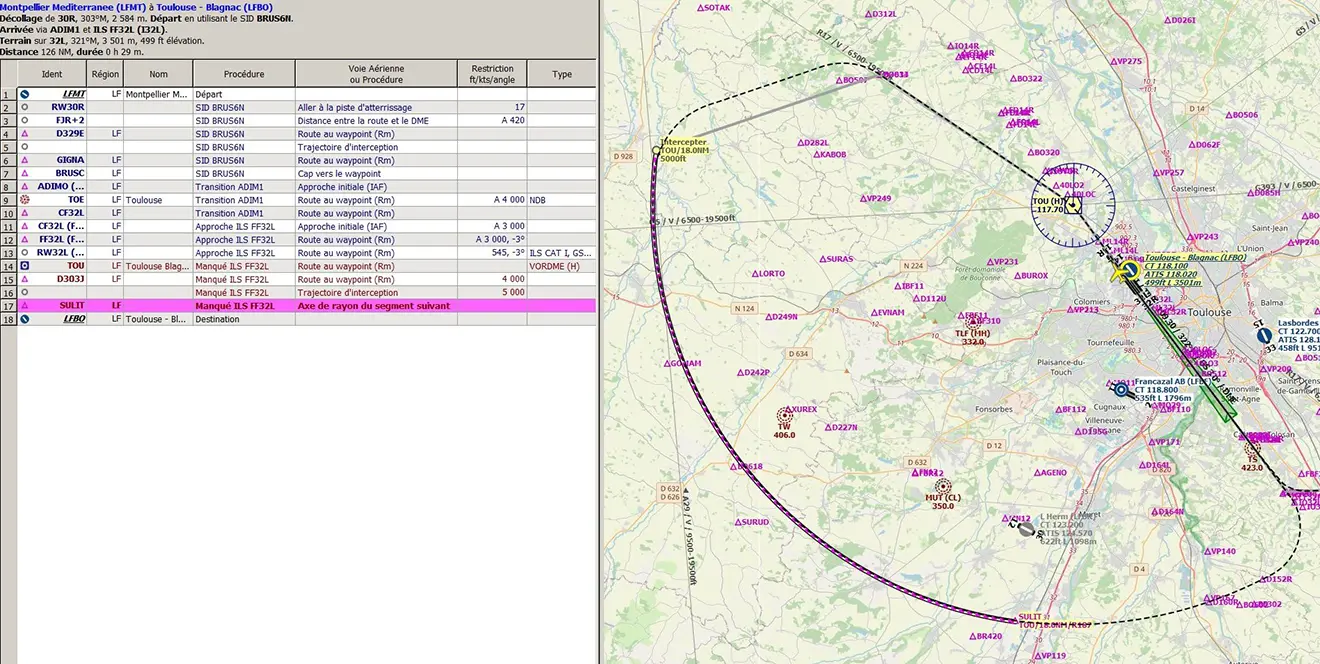Go-around (RMG/API) on A320
A - Technique
The go-around is a so-called normal procedure even if, in fact, remains quite rare. It is part of the SOP (Standard Operating Procedures).
It is very important to work on it, especially if you are flying with air traffic control (IVAO).
Failure to go around when the circumstances require it is a real aggravating factor that can lead to an accident.
As a go-around is safer to perform "far" from the ground than at a lower height, once the decision to go-around has been made, the execution should not delay.
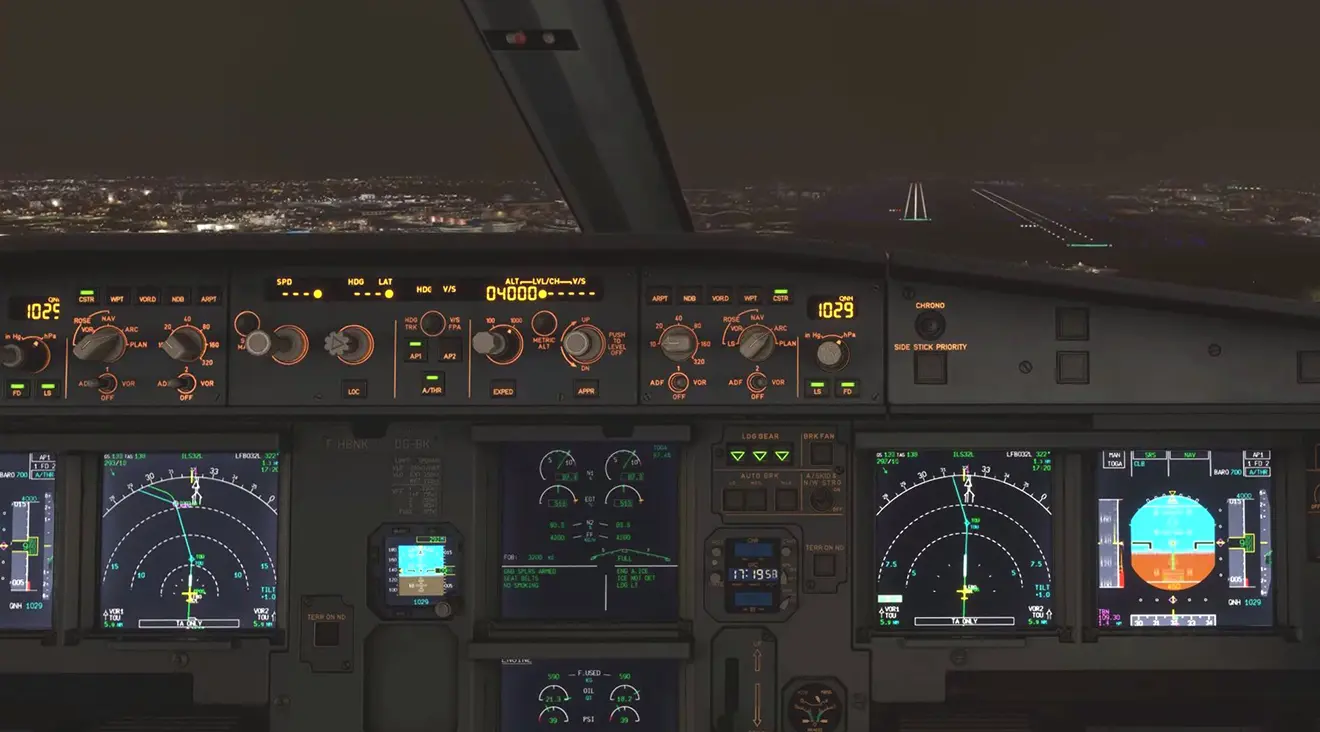
- At the request of the control,
- On a loss or doubt of situational awareness,
- On a failure involving the safe completion of the approach (loss of airworthiness),
- On an unstabilized or destabilized approach below the stabilization floor,
- On a GPWS, TCAS, Windshear or ROW type alarm,
- On visual references not obtained or lost at or below minima.
Under what conditions to go around?
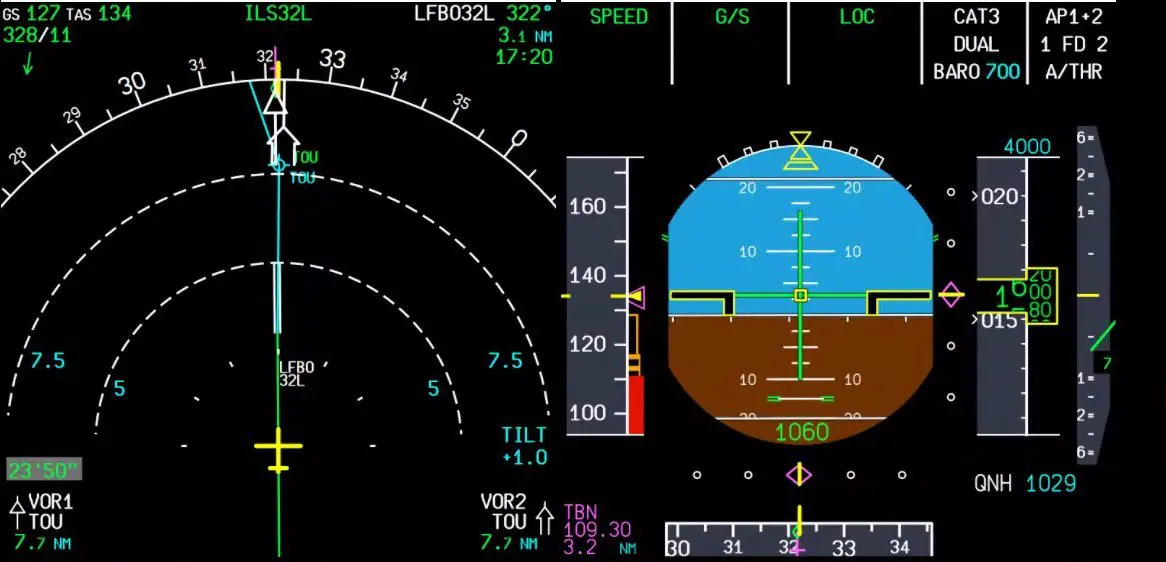
Until when is a go-around possible?
As long as the throttle controls have not been selected in the Reverse detent (including Reverse idle, i.e. paddles up), a go-around is still possible. When the flying pilot has brought the throttles into the Reverse Idle notch, the go-around must no longer be performed. Indeed, engine manufacturers do not guarantee not after selection of the Reverse notch that moving the throttle levers into the TOGA notch will trigger symmetrical thrusting of all the engines, which can therefore lead to very high thrust. asymmetrical and therefore a possible loss of control by the flight crew.
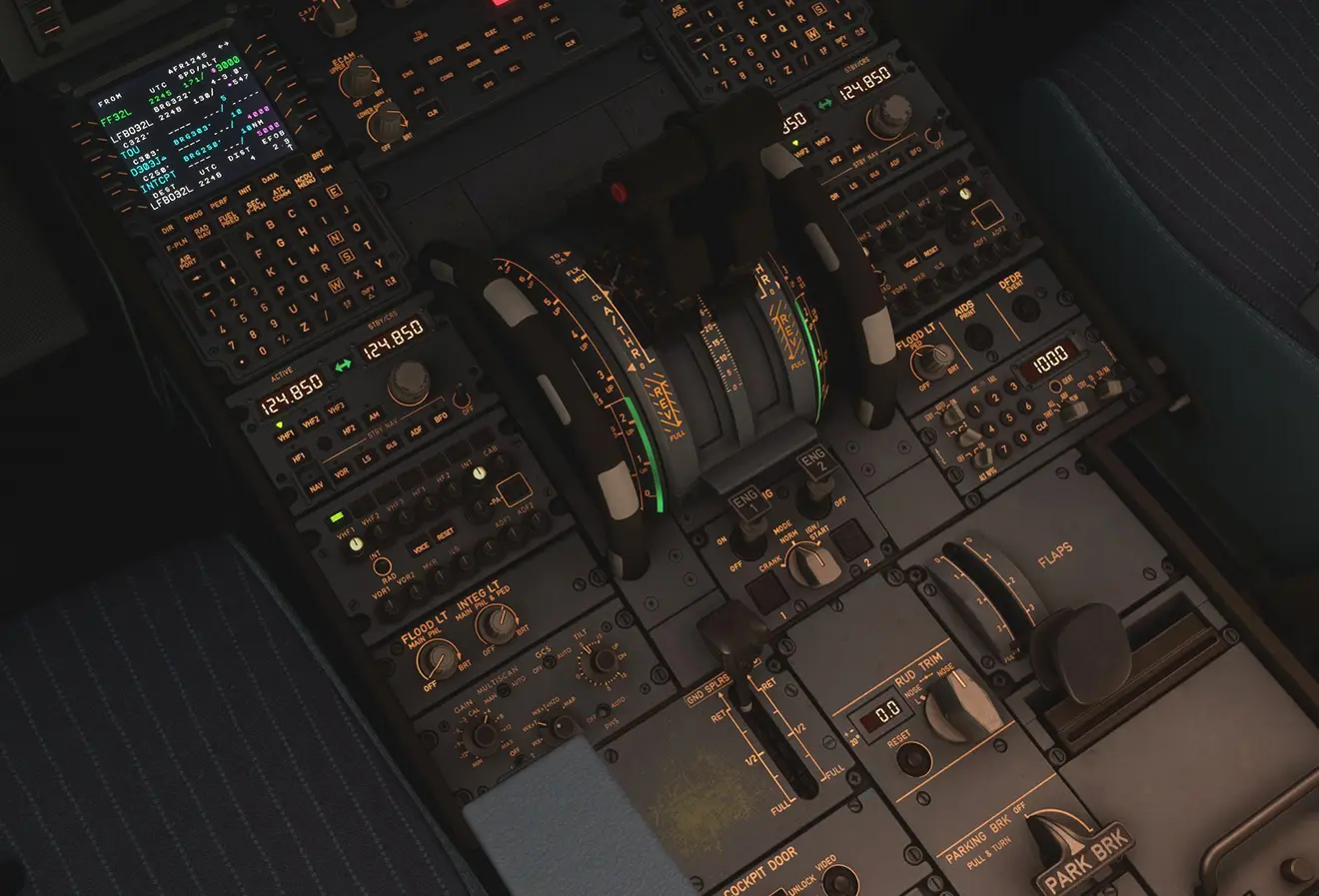
Go-around close to the ground:
If the decision or the request for a go-around is very late, it is possible that the landing gear will come into contact with the runway (moving the throttles from the Idle position to the TOGA can cause the engines to respond up to 6 seconds after the command is requested and an altitude loss of up to 35 feet). The rotation must then be flexible and measured to prevent the rear part of the aircraft touches the runway (tailstrike). The fact of passing TOGA while the undercarriage of the aircraft is in contact with the runway may possibly trigger temporary alarms of the type configuration that should be ignored.
In the same way, the crew will wait for the airplane to be established on its climb trajectory before retracting a notch of flaps.
One of the biggest pitfalls of the A320 lies in the fact that the go-around mode will only engage if at least one flap notch is extended (= flap lever positioned at position 1 or below).
If, for example, you are under AP, on the final descent of an ILS, smooth aircraft (= flaps 0) and air traffic control asks you to go around, moving the throttles to the TOGA detent will cause a very rapid acceleration of the airplane on its descent trajectory without triggering the go-around procedure. This is absolutely not a situation for the future!
- If AP or FD are used SRS and GA TRK (NAV) modes will engage.
- If the AP and FD are not used, the flying pilot will initially seek a 15° pitch attitude, the FD will automatically engage in HDG/VS mode (if the aircraft is equipped with the "Automatic FD Bar Engagement at Go-Around" option),
- If extended, the Speed Brakes will automatically retract (regardless of lever position)
- On the FMS, the go-around procedure becomes the active flight plan and at the end of the go-around maneuver the current trajectory will be linked to the coming approach to be tempted (for a 2nd chance!).
What happens when a go-around is triggered = throttles pushed to the stop, in the TOGA notch (provided the flaps are not at 0):
- Have at least one notch of flaps,
- Going through the TOGA notch of the throttles,
- Have displayed the altitude indicated on the map (example 4000 ft) for the missed approach (API).
To initiate a go-around, you must therefore:
Practical execution of a go-around:
The A320 is a device designed to be piloted by 2. In the context of the simulation, the pilot at the controls is generally alone in front of his keyboard and his screen and therefore performs all the actions devolved PF (Pilot Flying) and PM (Pilot Monitoring) further increasing the workload and the difficulty of this dynamic and often unexpected manoeuvre.
- The first of the actions will be to, simultaneously:
- Put the throttle levers in the TOGA notch (no thinking, it's at the front stop!)
- Rotate to 15° attitude (12.5° in the event of an engine failure) or let the autopilot do its thing if it is engaged.
- Announce the go-around. The standard announcement is "Go Around - Flaps". - While continuing to monitor the flight parameters (PM), it will be necessary to retract the flaps one notch.
- Announcement of the FMA (PF) who will be MAN TOGA / SRS / GA TRACK (or NAV / A-THR)
- Check the ascending trajectory and announce the climb by "Positive Climb" (PM).
- Order the retraction of the "Gear Up" (PF) train. Bring in the train (PM).
- Request selection of horizontal navigation mode, NAV or HDG (PF)
- Check the go-around altitude (PM) that will have been entered during the approach.
- At the thrust deduction altitude (when LVR CLB will flash at the FMA), throttles in the CLB detent (PF).
- At the go-around acceleration altitude, check that the target speed is indeed Green Dot (PF).
- At speed F, order (PF) the retraction of the flaps towards 1 ("Flaps 1") and execute it (PM).
- At speed S, order (PF) the retraction of the flaps towards 0 ("Flaps 0") and execute it (PM which will also disarm the GND SPLRS and cut the headlights) .
Of course, at any time during the procedure, the re-engagement of the autopilot will allow the pilot alone to maintain availability.
- Retry the approach,
- Purge on another court.
The go-around is complete, now you only have two options, depending on what prompted the go-around:
Case of a go-around with an altitude indicated on the FCU lower than the present altitude
At Orly for example, on the runways used for landing, 06 facing East or 25 facing West, the go-around altitudes (2000') are systematically lower than the altitude at the start of the procedure (4000'). How in this case to carry out a go-around if the request or the need occurs at an altitude higher than the published go-around altitude?
Airbus has published a procedure called Discontinued Approach, relatively simple, which can be applied up to the go-around altitude indicated on the FCU (below this altitude, even by a few feet, the go-around procedure described above must be applied, probably very quickly passing the thrust levers through the TOGA detent before returning to the CLB detent).
The procedure simply consists, while in an ILS or FINAL APP mode, of pressing the APPR key (or LOC depending on the mode engaged). This will disengage approach mode. The standard callout that the PF will make is "Cancel Approach".
It is then up to the crew to select at the FCU the lateral (NAV or HDG), vertical (Level off or V/S) modes and the desired target speed to follow the published trajectory and therefore continue, despite everything, the descent to the target altitude (unless otherwise requested by air traffic control).
B - The example
Example of a go-around (API) during a flight LFMT (Montpellier) – LFBO (Toulouse)
Prerequisites:
For the "Go Around" functionality to work on the Fenix A320, the following parameter must be activated in the "Customise Aircraft" page of the EFB:
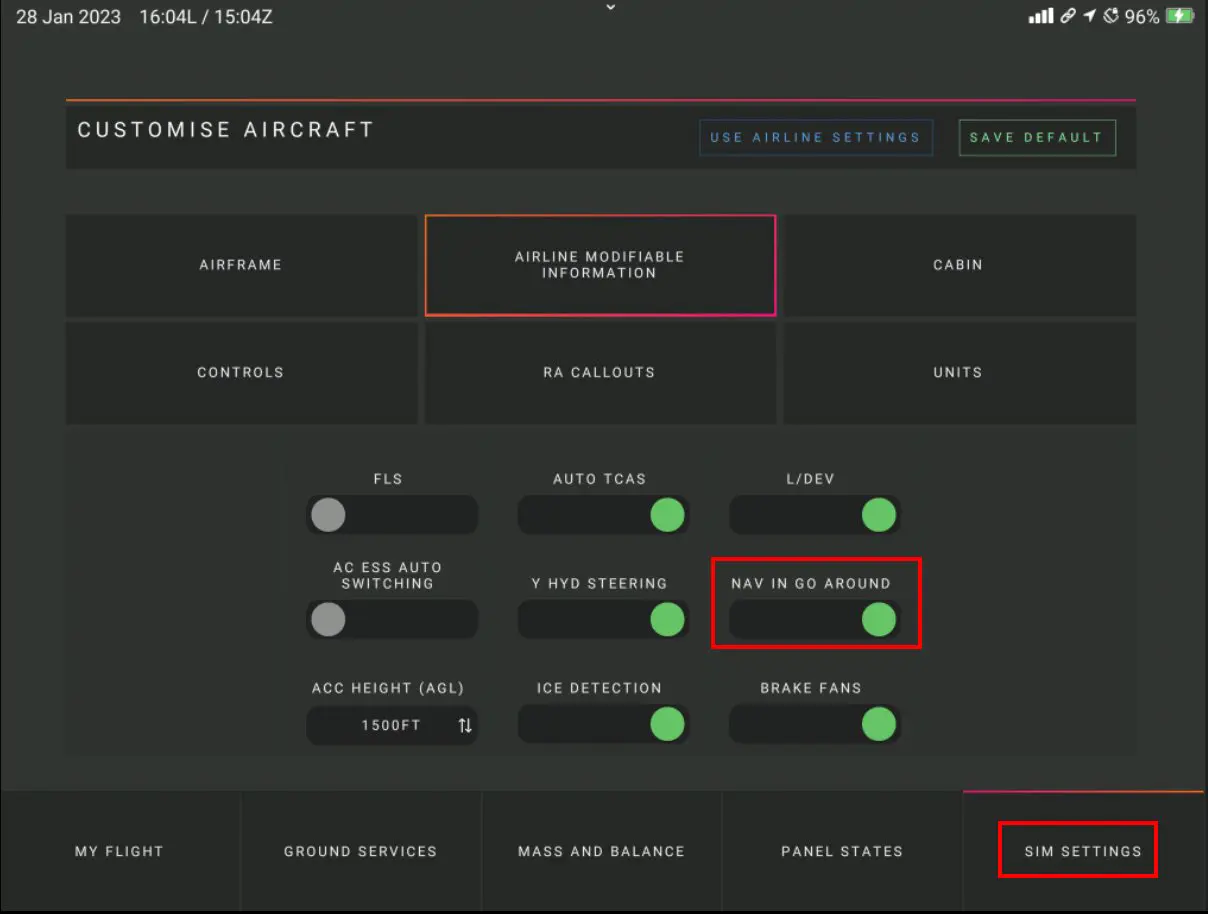
For the FBW A32NX, the functionality was not yet operational when this document was written: updates to this device are very frequent, see the documentation.
Flight plan: ILS 32L approach at LFBO – SIA map
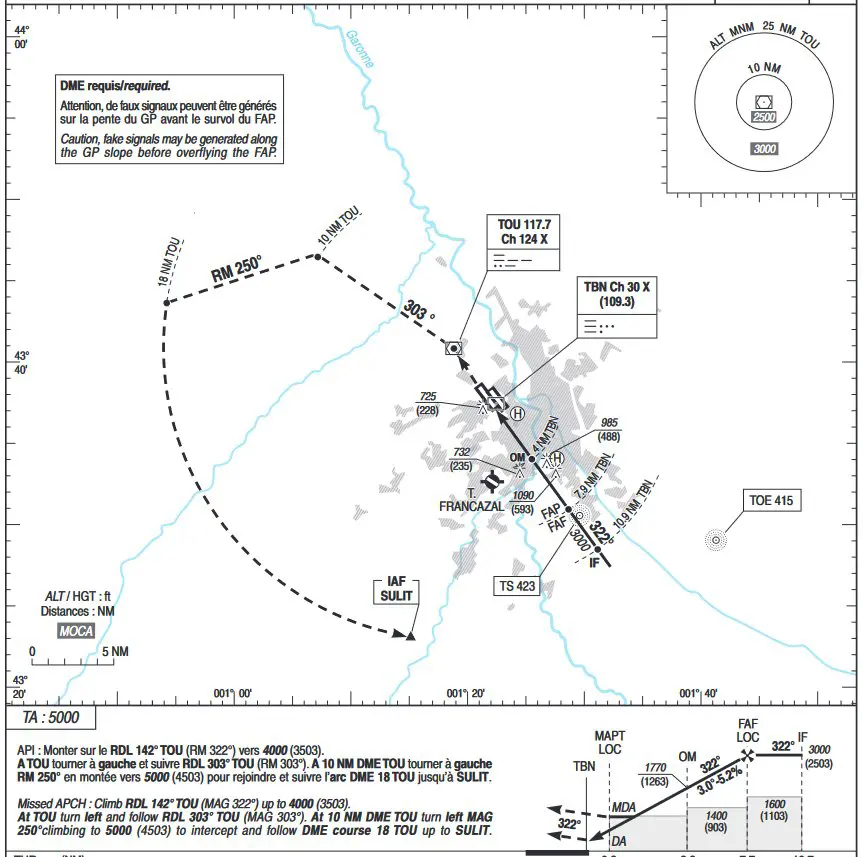
Map of the approach in LNM (red frames for the go-around part):
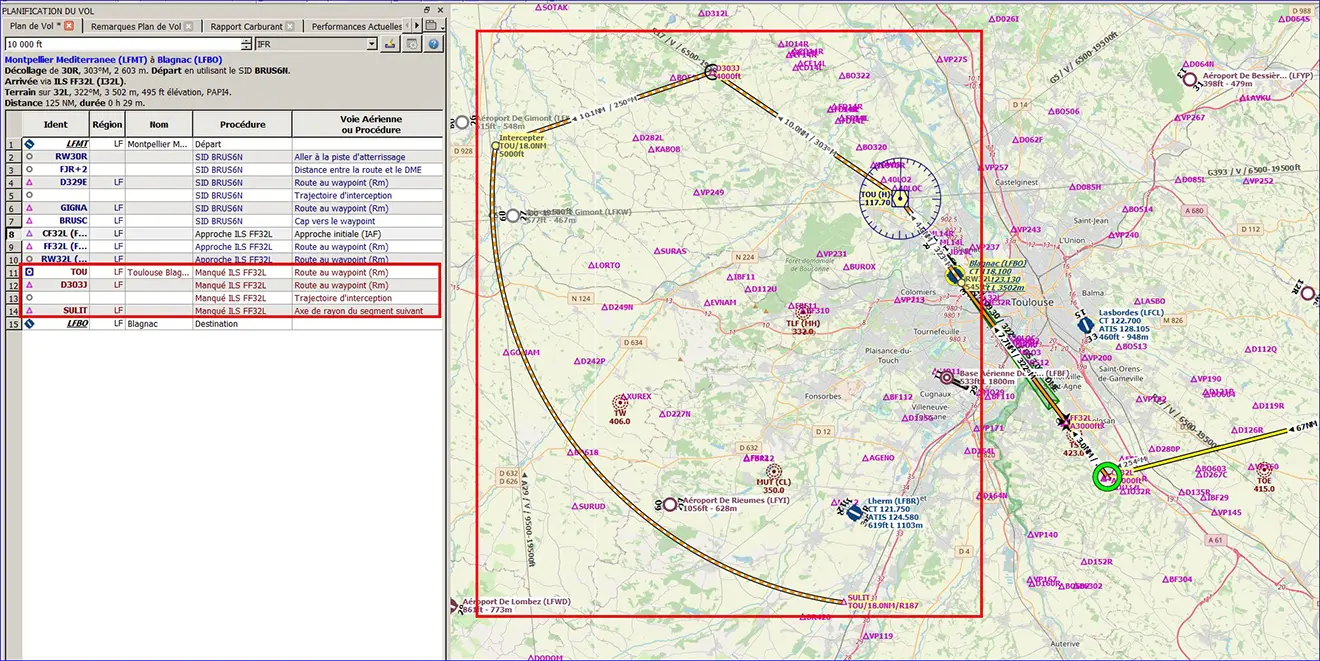
In the plane (A320 Fenix) - MCDU and ND: the points and the plot of the "RMG" are colored cyan (blue)
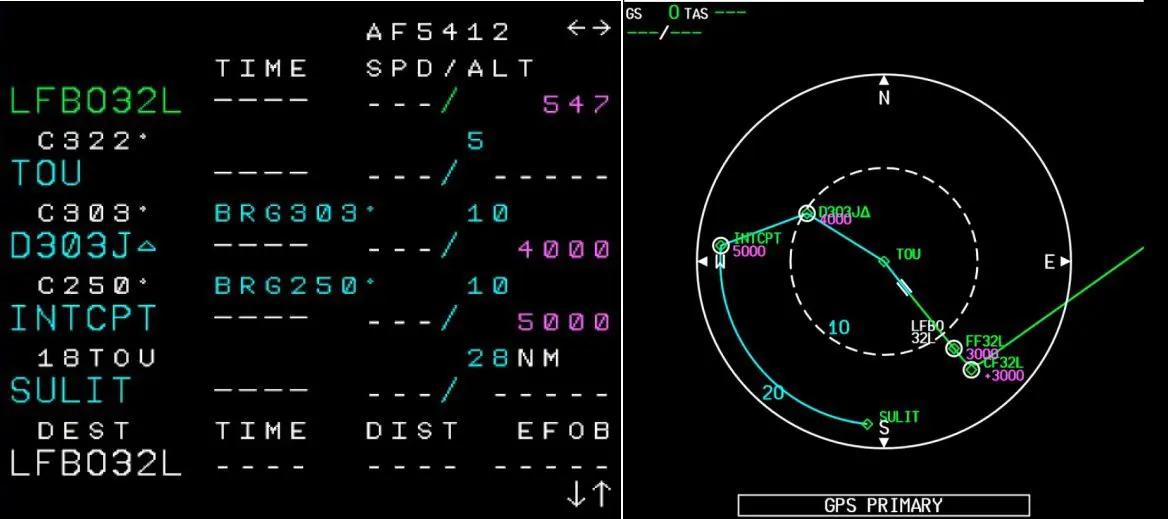
Decision to go around taken, display the altitude indicated on the map for the "API" circuit

NB: If he is engaged, the PA will be kept in function.
At 450 ft above ground, throttle on TOGA
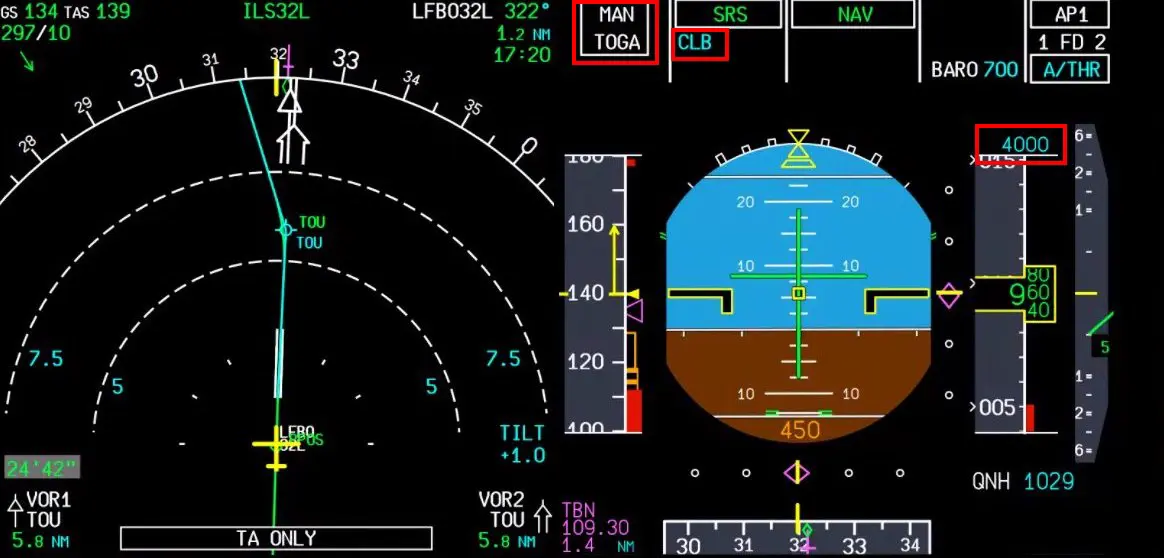
We retract a notch of flaps.
On the ND and on the MCDU, the displays of the RMG turn green: they are active
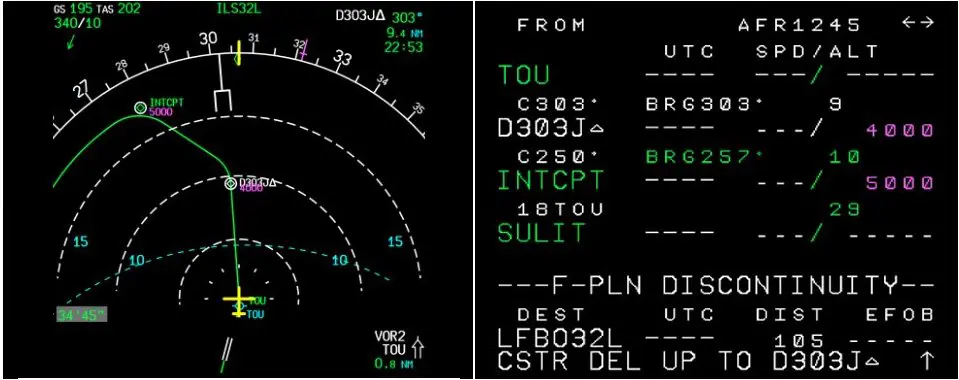
We retract the flaps as the speed increases (passing from S then F) and, after point D303J, we display the altitude of 5000 ft as planned on the map and we will resume the climb.
It is now necessary to hang up the procedure on the ILS32L approach. The altitude and speed of the aircraft being stabilized (Green Dot), there is time to enter the new approach in the MCDU before waiting the "SULIT" point and the "discontinuity".
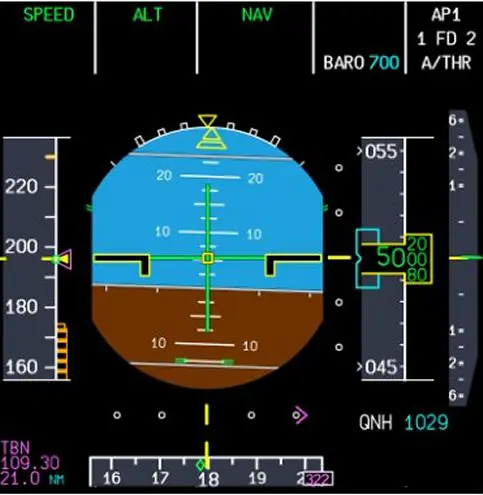
Below are the steps for updating the flight plan for a return to LFBO by clicking on the "LFBO32L" line then on "Arrival".
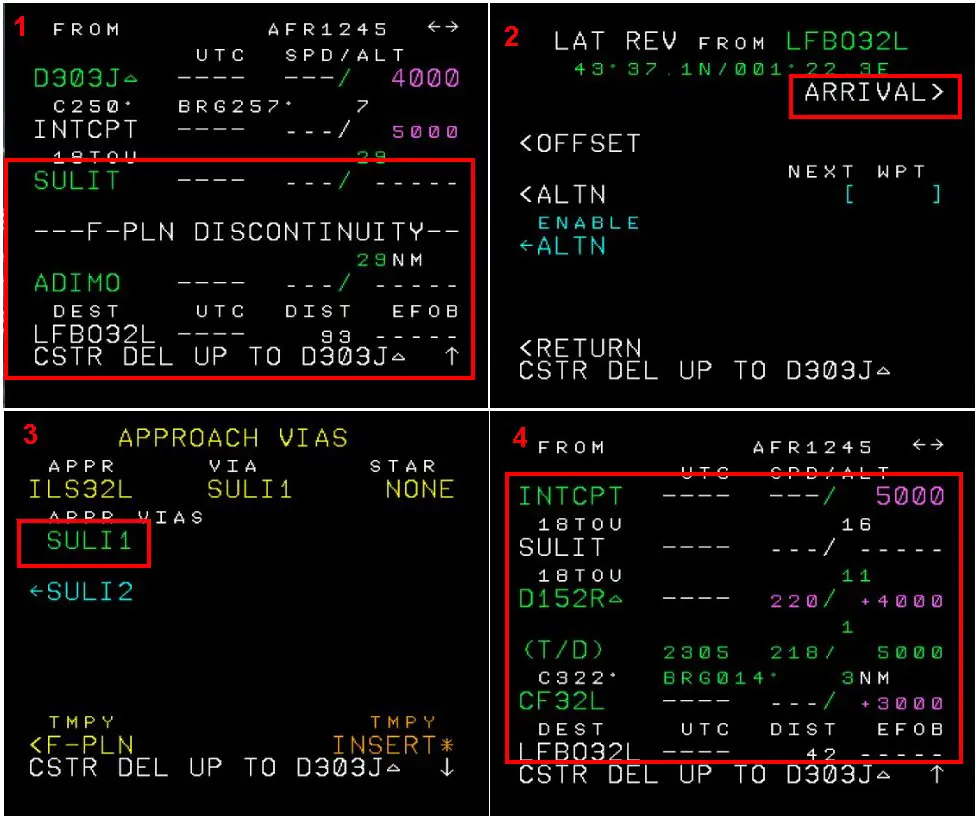
The new approach is integrated into the flight plan
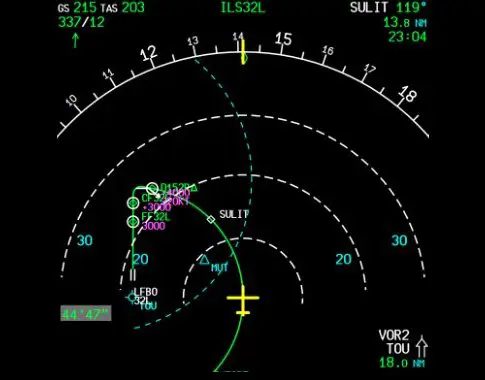
To ensure follow-up with LNM, it is also loaded, which gives the following end of flight:
